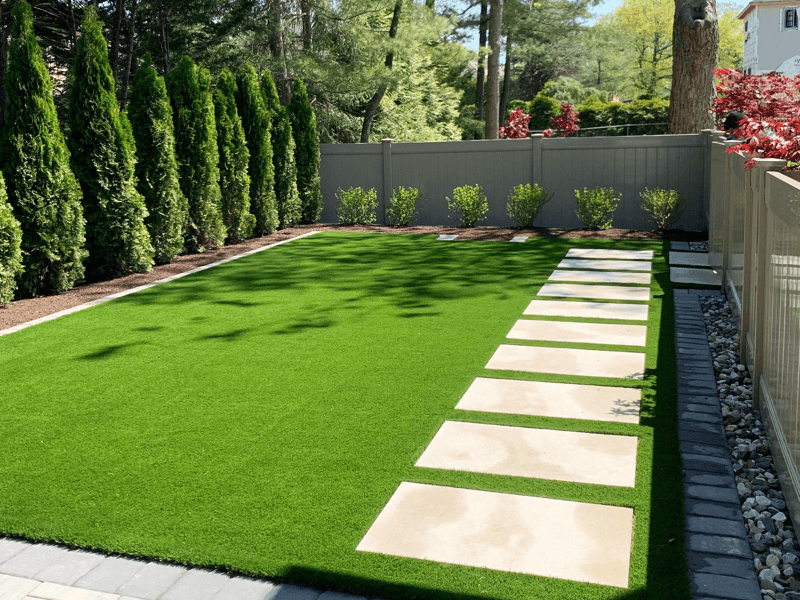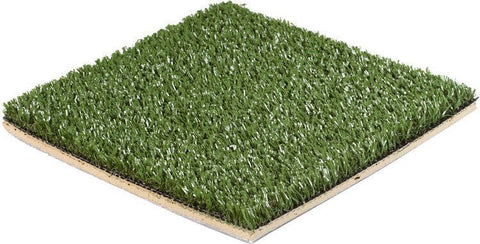Delve Into the Environmental Advantages of Opting for Artificial Grass Solutions
The fostering of fabricated turf options presents an engaging possibility to resolve pushing environmental challenges. By substantially reducing water usage and decreasing the application of unsafe chemicals, these alternatives not only promote lasting landscape design yet additionally protect regional ecosystems.
Water Conservation Advantages
One of one of the most substantial benefits of man-made lawn is its capacity to preserve water. Typical yard lawns call for significant watering, particularly in locations susceptible to drought or water restrictions. On the other hand, man-made grass does not need watering, significantly minimizing the general demand for water sources. This function is specifically valuable in dry regions where water scarcity is a pressing problem.
By eliminating the need for regular watering, synthetic grass contributes to lasting landscape techniques and helps reduce the environmental impact of extreme water intake. Moreover, the preservation of water reaches the reduction of runoff, which can result in dirt disintegration and river pollution.
Additionally, the setup of synthetic grass allows towns and house owners to assign water resources extra efficiently, focusing on important uses such as drinking water and farming. The shift towards artificial grass not just promotes responsible water use but also aligns with broader ecological objectives targeted at protecting natural deposits.
As neighborhoods significantly prioritize sustainability, the water conservation advantages of synthetic grass provide an engaging instance for its fostering in domestic and business landscape design projects.
Reduced Chemical Usage
The transition to artificial lawn substantially lowers the dependence on chemical treatments commonly used in natural grass upkeep. Standard grass management generally entails the application of herbicides, chemicals, and fertilizers to promote development and control pests. These chemicals can posture threats to human health and wellness, local wild animals, and the environment, adding to soil and water contamination.
On the other hand, synthetic grass gets rid of the need for these damaging substances. When installed, it needs marginal upkeep, largely consisting of routine cleansing and seldom infill replenishment. This decrease in chemical usage not just benefits the instant environment but also contributes to more comprehensive ecological security. By decreasing the release of artificial substances into the ecosystem, synthetic grass advertises much healthier soil and water supply.
In addition, the lack of chemical drainage connected with man-made grass setups aids secure local waterways from air pollution, sustaining marine life and keeping biodiversity. Artificial turf companies phoenix. As areas significantly focus on lasting techniques, choosing fabricated lawn presents a practical service that aligns with ecological preservation goals. Through this change, home owners can enjoy lavish environment-friendly areas without jeopardizing environmental health, leading the way for an extra lasting future
Lower Carbon Impact

Moreover, the installment of synthetic grass can lead to substantial water conservation. All-natural grass call for considerable quantities of water for irrigation, which not only includes in the carbon footprint related to water extraction and treatment yet also strains regional water sources. On the other hand, fabricated lawn requires minimal upkeep, calling for no watering, thereby substantially minimizing water usage and its connected energy expenses.
Furthermore, the longevity of synthetic grass contributes to its decreased carbon influence. With a life expectancy of approximately 15 years or even more, the need for constant substitutes is lessened, leading to less waste and lower energy intake in manufacturing and dealing with traditional lawn options. Overall, synthetic grass offers a lasting alternative for eco aware landscape design.
Environment Conservation
Environment preservation is a critical factor to consider in the dispute over landscaping choices, particularly when contrasting synthetic grass to natural lawn. All-natural lawn yards usually call for substantial maintenance, consisting of using fertilizers, herbicides, and chemicals, which can adversely impact local ecological communities. These chemicals can leach into the dirt and rivers, hurting indigenous plants and animals and disrupting regional environments.
On the other hand, fabricated turf provides an opportunity to minimize the eco-friendly impact of landscape index design. By choosing for artificial turf, home owners can reduce the disturbance of all-natural habitats related to standard grass care practices. Synthetic grass removes the demand for dangerous chemicals, thereby safeguarding neighboring wild animals and maintaining the stability of bordering ecological communities. The setup of synthetic grass can lead to the conversion of former grass areas into more biodiverse landscapes, such as pollinator gardens or native plant areas, which can support neighborhood wild animals.
Ultimately, the change to synthetic lawn not just preserves water and minimizes upkeep efforts but also cultivates a more harmonious partnership in between human activities and the native environment, promoting environment conservation at the same time.
Long-Term Sustainability
Long-term sustainability is a critical element in examining the advantages of synthetic grass over standard lawn yards. Among the most substantial advantages of fabricated grass is its resilience; it can last up to 15-20 years with very little upkeep, whereas all-natural turf calls for regular reseeding and substitute. This longevity reduces the demand for constant sources, such as water, fertilizers, and chemicals, which are essential for keeping a healthy yard lawn.
Furthermore, synthetic grass contributes to a decrease in carbon exhausts connected Read Full Article with grass treatment equipment. Typical lawns commonly call for gas-powered mowers, leaners, and blowers, all of which add to air pollution. Arizona artificial turf. On the other hand, synthetic grass gets rid of the demand for such equipment, advertising a cleaner setting
Furthermore, the manufacturing of fabricated turf progressively makes use of recycled materials, improving its sustainability account. As manufacturers adopt eco-friendly practices, the environmental impact of synthetic grass proceeds to diminish.

Conclusion
The fostering of artificial lawn services offers significant ecological advantages, consisting of substantial water preservation, reduced reliance on harmful chemicals, and a reduced carbon impact. Additionally, artificial turf help in preserving all-natural environments by reducing land disruption and advertising long-lasting sustainability via the use of long lasting products. Jointly, these variables emphasize the potential of synthetic grass to contribute positively to environmental wellness and supply a viable option to traditional landscape design practices in a progressively resource-conscious globe.
In comparison, synthetic grass does not require watering, dramatically reducing the total demand for water resources. By reducing the launch of artificial substances into the environment, fabricated lawn advertises much healthier dirt and water systems.
Furthermore, the installation of synthetic turf can result in considerable water conservation. In comparison, man-made lawn requires marginal upkeep, calling for no watering, thus significantly lowering water usage and its associated energy costs.
